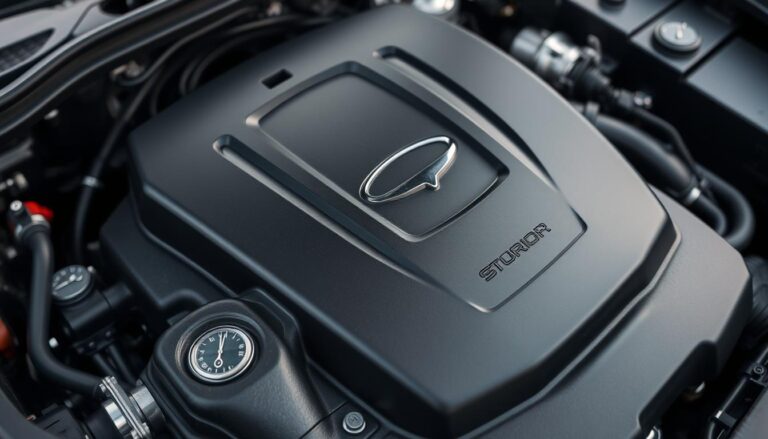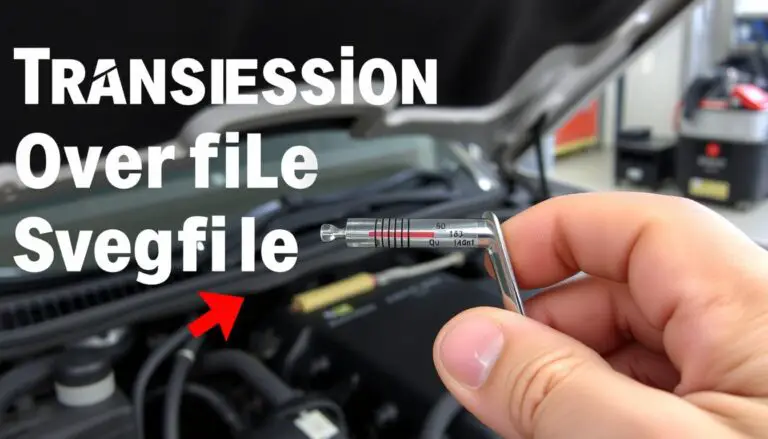This Ultimate Guideoutlines what a freon leak in car situations mean and why refrigerant matters for air conditioning performance.
Early signs like hissing noises, weak cooling, or ice on evaporator coils can signal a refrigerant issue. Acting fast can prevent costly damage and protect occupants from fumes that may cause dizziness or nausea.
Turn the system off, move to fresh air, and call a trained technician for prompt service. A low refrigerant charge stresses the compressor and reduces system performance over time.
We also touch on environmental context: legacy freon types harmed ozone, and modern practices aim to limit refrigerant leaks and improve maintenance routines.
Key Takeaways
- Recognize common signs: hissing, reduced cooling, or frozen coils.
- Shut off the system and ventilate if you suspect a refrigerant leak.
- Low refrigerant harms performance and can cause compressor damage.
- Professional repair and timely maintenance save time and money.
- Modern refrigerants and proper services reduce environmental impact.
What a Freon Leak in a Car Really Means and Why It Matters
A drop in refrigerant within your car air conditioning system reduces cooling output and stresses mechanical parts.
What that means: the sealed circuit loses charge, so the compressor must work harder to reach set temperatures. Over time, reduced coolant flow can pull oil away from bearings and increase wear.
Early signs are often subtle but telling.
- Hissing near fittings or hoses.
- Weaker cooling at idle or in traffic.
- Ice buildup on evaporator lines or reduced airflow.
| Symptom | Likely Source | Immediate Action |
|---|---|---|
| Hissing sound | Fitting or hose breach | Stop use and book professional service |
| Warm or slow cooling | Low refrigerant charge | Diagnostic check and safe recharge |
| Frozen evaporator | Insufficient heat absorption | Allow thawing; have system inspected |
Prompt professional attention protects performance and prevents small problems from becoming costly repairs.
How Car Air Conditioning Works and the Role of Refrigerant
A vehicle’s air conditioning relies on a closed refrigerant circuit to move heat from the cabin to the outside air. Understanding key parts helps you spot problems faster and describe symptoms clearly to a technician.

The closed-loop AC components
Compressor: pressurizes the coolant and keeps circulation steady.
Condenser: rejects heat to ambient air so the fluid condenses.
Expansion device and evaporator: meter flow and absorb cabin heat, delivering cooling to passengers.
Refrigerant basics and pressure behavior
Refrigerant shifts between liquid and gas under changing pressure. That phase change moves heat efficiently; an incorrect charge disrupts pressures and lowers performance.
Common sources of leaks
Typical problem parts include worn O-rings, cracked hoses, corroded evaporator cores, damaged condensers, and faulty service ports. Hissing or oily residue often marks the source.
Tip: Proper evacuation, recharge by weight, and pressure checks during service protect the compressor and restore cooling performance over time.
Freon Leak in Car: Understanding the Risks and Safety Concerns
Hot weather and heavy use can reveal hidden faults when your vehicle’s cabin no longer cools as it should.

Performance warning signs
Warm air from vents, reduced cooling efficiency, or longer cooldown time are common signs. These symptoms get worse at idle and on hot days when the system works hardest.
Audible and visual clues
Listen for hissing near hoses or fittings. Look for oily residue around connectors or a frozen evaporator coil. Such clues point to parts that need prompt repair.
Health-related symptoms
Headaches, dizziness, nausea, coughing, or breathing issues require immediate caution. Children and pets are more vulnerable in confined cabins. If symptoms appear, ventilate and seek professional service right away.
Why summer makes it worse
Higher ambient heat raises pressures and stresses seals. Even small leaks can grow as oil leaves with the coolant, causing further loss of refrigerant and added damage to the compressor. Schedule a diagnostic appointment today to avoid costly repairs.
Immediate Safety Steps if You Suspect a Refrigerant Leak
When your cabin air changes suddenly, early steps can limit harm and speed up repair.
Shut down the system. Turn off the AC system right away to stop further loss of coolant and reduce risk of damage to the compressor.
Ventilate and move to fresh air. Open doors and windows, run the vehicle fan on fresh-air mode, and leave enclosed spaces so vapors do not concentrate.
What to avoid
- Do not use DIY recharge kits. Improper charging can mask leaks and cause more damage.
- Do not sniff or place your face near suspected vents or fittings. Direct inhalation can cause dizziness, headaches, or nausea.
Document what you observed: note when the issue started, any hissing sounds, or sudden drops in cooling at idle. This helps a technician find the source faster.
| Immediate Action | Why it Matters | Next Step |
|---|---|---|
| Turn off AC system | Stops coolant loss and limits compressor damage | Vent cabin and exit vehicle |
| Ventilate area | Reduces vapor concentration and health risk | Call for professional service |
| Avoid DIY fixes | Prevents improper charging and hidden leaks | Schedule appointment with certified tech |
Contact a qualified technician today to diagnose and repair the issue. A pro will recover remaining refrigerant, repair the leak, and recharge the system to correct pressures and restore safe performance.
Risks to People, the Environment, and Your Vehicle
A small coolant seep can ripple into bigger problems for passengers, the planet, and vehicle components.
Human health hazards
Short exposures to escaping refrigerant can cause headaches, dizziness, nausea, and breathing irritation.
Confined cabins raise risk; children and pets face greater harm in enclosed spaces. If anyone feels unwell, ventilate and seek help.
Environmental concerns
Older coolant types harmed the ozone layer, prompting EPA phaseouts. Today, responsible recovery and disposal prevent needless releases to air.
Vehicle damage and costly repairs
Running a system with low refrigerant starves the compressor of oil-coolant mix and speeds wear.
Pressure imbalance can cause erratic cycling, higher discharge temperatures, and internal contamination. That raises repair bills and shortens component life.
| Risk Area | What Happens | Action Today |
|---|---|---|
| Health | Headaches, dizziness, respiratory irritation | Vent cabin; seek service if symptoms persist |
| Environment | Ozone harm (legacy) and greenhouse impact from releases | Use certified recovery and proper disposal |
| Vehicle | Compressor wear, contamination, higher fuel use | Schedule diagnostic maintenance and repair leaks |
Professional Diagnosis, Repairs, and Preventive Maintenance
Professional diagnosis starts with pressure checks and targeted tests to reveal hidden system problems.
Technicians use electronic sniffers, UV dye, and controlled pressure testing to find even small refrigerant leaks. They always recover remaining coolant safely before opening or repairing components.
How pros find faults
Visual inspection checks hoses, O-rings, condenser, evaporator, and service ports for oily residue or damage.
Diagnostic tools include UV dye, electronic detectors, and calibrated pressure gauges to verify low refrigerant or abnormal pressure readings.
Maintenance today for better performance tomorrow
After repairs, technicians recharge by weight, confirm pressure and vent temperatures, and document results. This restores cooling efficiency and reduces future damage.
Repair vs. replace decisions depend on part condition, vehicle age, and cost. A targeted repair can fix one common failure. A full component swap suits extensive or repeated problems.
| Step | What it shows | Owner action | Outcome |
|---|---|---|---|
| Pressure test | System integrity and leaks | Schedule appointment | Pinpoint leak location |
| UV dye / sniffer | Confirm even small seeping connections | Approve repair | Targeted part replacement |
| Safe recovery & recharge | Protects air and environment | Keep service records | Restored cooling and proper pressures |
| Preventive maintenance | Early signs and worn parts | Book regular service | Fewer repairs and longer system life |
Conclusion
When cooling fades, act fast. A refrigerant leak in your vehicle is both a comfort and safety issue. Watch for hissing, weak airflow, or frozen coils and stop use if symptoms appear.
Ventilate the cabin, avoid inhalation, and contact a certified technician. Small leaks cause progressive loss and can damage the compressor, especially under summer heat.
Professional diagnosis, safe recovery, and timely services restore function and limit environmental harm. This post underscores that prompt care protects occupants and keeps your vehicle reliable.
If you notice signs today, book an inspection—don’t wait for peak season.
FAQ
What does a refrigerant leak in my vehicle mean and why should I care?
A refrigerant escape indicates a breach in the closed-loop air conditioning system. That breach reduces cooling performance, increases compressor strain, and can allow contaminants into the system. Beyond comfort loss, continued operation with low refrigerant can lead to costly repairs such as compressor failure and evaporator damage.
How does my car’s AC system normally work?
The system cycles refrigerant through the compressor, condenser, expansion device and evaporator. The compressor raises pressure, the condenser sheds heat, the expansion device drops pressure and the evaporator absorbs cabin heat. Proper pressure and refrigerant charge are essential for efficient cooling.
Where do most refrigerant escapes start?
Common failure points include rubber hoses, O-rings, service ports, the condenser at the front of the vehicle, and the evaporator core inside the dash. Corrosion, vibration, and age-related seal deterioration are frequent causes.
What are the warning signs that my car’s AC is leaking refrigerant?
Look for warm or less-cold air from vents, longer cooldown times, and steadily declining performance. You might hear hissing near components, notice oily residue at fittings, or see frost on the evaporator or lines.
Can exposure to automotive refrigerants cause health problems?
Yes. Inhalation can cause headaches, dizziness, nausea, shortness of breath, or more severe outcomes in concentrated areas. Children and pets are more vulnerable. Move to fresh air if you suspect exposure and seek medical help for severe symptoms.
Should I attempt a DIY recharge for low refrigerant?
No. DIY recharge kits may mask an underlying leak, cause overcharging, or introduce contaminants. Refrigerant handling requires correct diagnosis, leak repair, and certified recovery to protect you and the environment.
What immediate safety steps should I take if I suspect a leak while driving?
Turn off the AC, open windows to ventilate the cabin, and park in a well-ventilated area. Avoid lingering in confined spaces near the vehicle and keep children and pets away until a professional inspects the system.
How do technicians locate and confirm refrigerant escapes?
Pros use methods like pressure testing, ultraviolet dye inspection, and electronic refrigerant detectors. Technicians also recover remaining refrigerant safely before repair and test the system after fixes to ensure proper pressure and no further loss.
What repairs are common and when is replacement needed?
Many leaks are fixed by replacing seals, hoses, or the condenser. Evaporator replacement is more labor-intensive and costlier when it’s the source. Technicians advise repair versus replace based on component condition, labor cost, and long-term performance.
How does summer heat affect refrigerant problems?
Higher ambient temperatures increase AC demand, raising system pressures and making small faults worse. A marginal seal or tiny puncture that was manageable in cool weather can fail and produce noticeable performance loss during summer.
Can a small refrigerant loss damage the compressor?
Yes. Low refrigerant reduces lubrication and changes pressure balance, causing the compressor to work harder and wear faster. Even small, persistent losses can shorten compressor life and lead to expensive replacement.
Are modern refrigerants harmful to the environment?
Many modern automotive refrigerants no longer deplete ozone, but they can contribute to global warming if released. Proper recovery and recycling during service prevent environmental harm and comply with regulations set by agencies such as the EPA.
How often should I schedule AC service to prevent problems?
Follow the vehicle manufacturer’s recommended intervals and add inspections if you notice reduced performance. Annual checks before hot weather are good practice: technicians can test pressures, check for oil residue, and spot potential failures early.
What should I expect during a professional AC service?
A full service includes system pressure checks, refrigerant recovery, leak detection, component inspection, replacement of failed parts, and recharge to manufacturer-specified charge. A post-service performance test confirms cooling efficiency and proper pressures.
How much does a typical repair cost for a refrigerant escape?
Costs vary by the failing part and labor. Simple seal or hose replacement is relatively inexpensive, while evaporator or compressor replacement can be several times higher. Get a diagnostic and itemized estimate from a reputable shop like Firestone Complete Auto Care or Midas.
Can I drive my vehicle with the AC off if there’s a suspected refrigerant issue?
You can drive with the AC off to avoid further strain on the compressor, but schedule service promptly. Driving long distances with a compromised system risks additional damage and may increase repair costs.
What records should I keep for AC maintenance?
Keep receipts for diagnostics, repairs, refrigerant type and charge amounts, and service dates. Clear records help technicians assess recurring problems and support warranty claims when parts are replaced.


